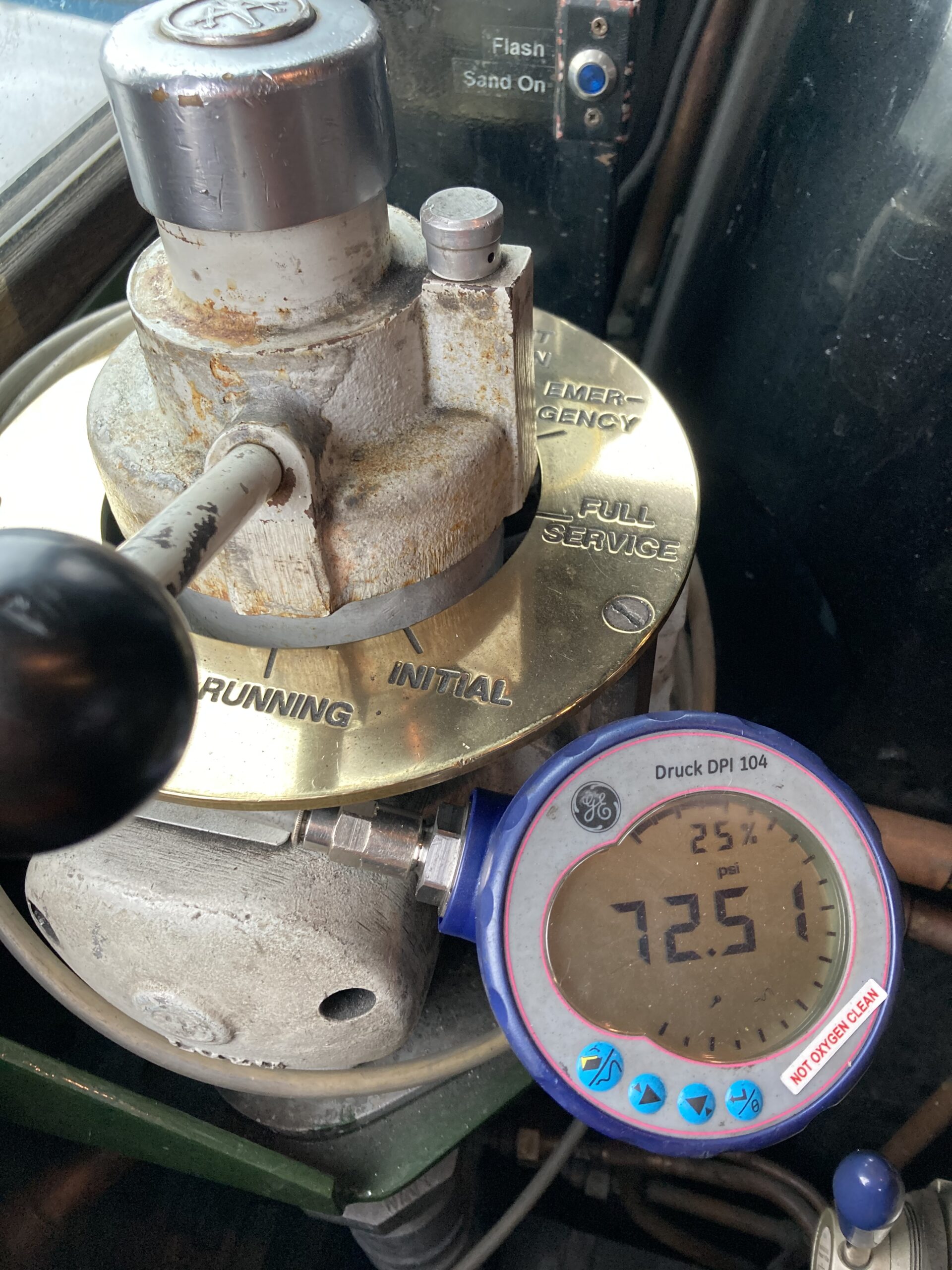Following the conclusion of the extended winter maintenance it was time to get the locomotive in steam for its official examinations.

With the boiler refilled the fire was lit and the engine slowly brought into steam, the engine then underwent a thorough steam test, which included a full braked test of both the air and vacuum brake system. In the picture you can see No. 60163’s brake valve along with our calibrated digital test gauge which is used to test and verify the brake pressures.

The engine passed the steam test with the only things of note being the weather and a defective LH leading sand valve which wasn’t working and had to be dismantled to remove a bucket full of wet sand. The image is just a glimpse of the weather we had during the steam test.
The following day we kept the engine in steam to allow us to carry out the functional parts of No. 21249’s No.4 and No.7 examinations as we used the engine to provide air and vacuum to test the brakes on the coach. The brake testing procedure on No. 21249 is actually more complicated than the tests we do on the engine as it involved several complex operation, isolation and timing tests on both the air and vacuum brakes systems.
The week after we returned to York again to prepare the engine for its official annual in steam examination with our VAB, so the engine was prepared and steamed again and everything went well. The day after the VAB steam test, we were again in steam but this time for the visit of Mandy Sharp who was there to carry out the annual inspections on the TPWS/AWS, OTMR and GSMR. The engine passed all of Mandy’s tests.

The week following the official VAB’s hot exam we set about completing all outstanding tasks the biggest of which was to change the broken Cartazzi spring and in the picture Ian points to the broken top leaf on the old spring.

With the new spring fitted it was necessary to check the weight distribution on the Cartazzi wheelset to ensure both wheels are carrying the same weight, this was done using the weighing equipment as seen in the photo. The equipment is fitted around the wheel and the two small hydraulic jacks push down on the rail and lift the wheel off the rail, at the point where the wheel lifts off the rail a reading is taken on the gauge, the wheel on the opposite side of the engine is also lifted using another set of weighing equipment and after one small adjustment we were able to obtain the same reading on both sides which confirmed even weight distribution.
So, with all essential tasks now complete the engine was laid up again, the firebox and ashpan washed out and left with doors open to allow air circulation, a chimney cap refitted to prevent rain and pigeon ingress, the smokebox door wedged open slightly to allow to air circulation and the boiler dosed with tannin which will remove the dissolved oxygen from the water and help prevent corrosion.